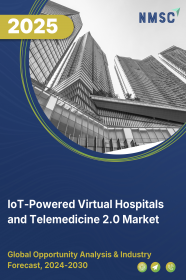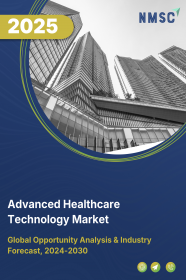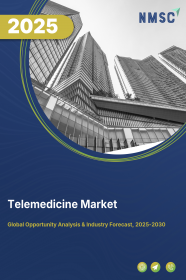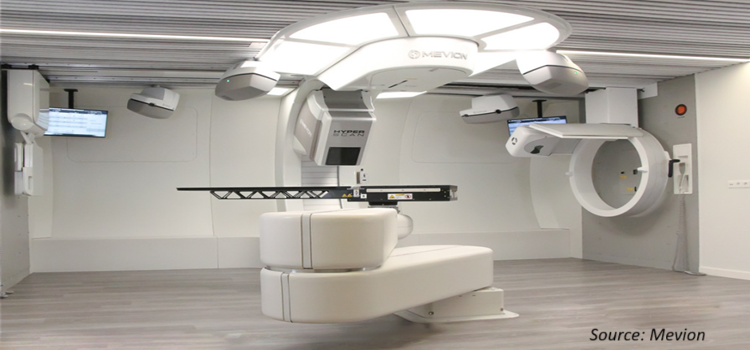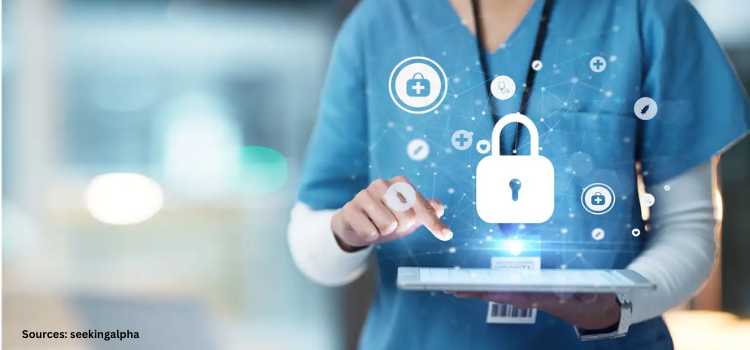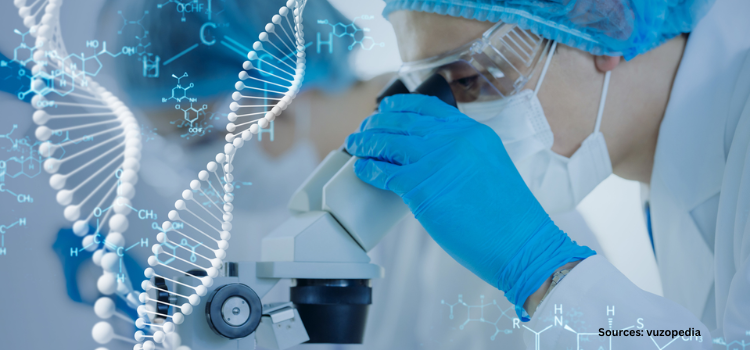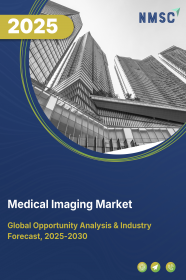
Medical Imaging Market by Technology (X-ray Devices (Digital and Analog), Computed Tomography (CT), Ultrasound Equipment (2D, 4D and Doppler), Magnetic Resonance Imaging (MRI) (Open and Closed), and Nuclear Imaging), by Application (Obstetrics/Gynaecology (OB/GYN), Orthopaedics, Neurology, Cardiology, Dentistry, Oncology, Mammography and Others), and by End User (Hospitals, Specialty Clinics, Diagnostic Centres and Research Institutes)- Global Opportunity Analysis and Industry Forecast 2025-2030
US Tariff Impact on Medical Imaging Market
Trump Tariffs Are Reshaping Global Business
Medical Imaging Market Overview
The global Medical Imaging Market size was valued at USD 37.49 billion in 2024 and is predicted to reach USD 52.13 billion by 2030 with a CAGR of 5.7% from 2025-2030.
The factors such as growing number of deadly chronic ailments, rise in aging population and expansion of medical infrastructure is boosting the medical imaging market. However, the high cost of advanced diagnostics gadgets and other accessories pose significant challenges to market expansion. On the contrary, the integration of artificial intelligence (AI) algorithms in the diagnostic devices in order to enhance speed and accuracy of diagnosis is promising future opportunities to enhance the gadgets.
Moreover, the top players in this radiology market such as GE Healthcare, Samsung Healthcare and others are taking various initiates such as product launch and collaboration in order to enhance their market position and expand their product offerings. Furthermore, the rising demand for sophisticated treatments, early detection of physical ailments, and government investment for expansion of healthcare industry is expected to propel further market growth. These initiatives aim to drive innovation and promote adoption, fostering a secure and efficient industry. With advancement in artificial intelligence, companies are focusing on developing advanced diagnostic devices capable of capturing high quality medical images with full accuracy and in limited time.
Rise in Chronic Diseases Boosting Medical Imaging Market
With the rising trend of chronic diseases, demand for the medical imaging industry is increasing as they help detect illnesses in their early stages through detailed internal scans. According to the report of The American Cancer Society's Global Cancer Statistics, 2024, a high surge in the counts of cancer, with 20 million new diagnoses in 2022 projected to extend up to 35 million by 2050. This points out the severe necessity of advanced diagnostic imaging results, which is basically an essential feature of early detection and effective planning of treatment.
Growing Number of Aging Populations Propels Medical Imaging Sector
The rise in the aging population is boosting the medical imaging market demand, as older adults require frequent and accurate diagnostics to monitor their health and detect potential issues. According to the World Health Organization, 2024, 1 out of 6 people worldwide will be aged 60 years or above with this population projected to rise up to 1.4 billion by 2030.
The number of people aged 60 and over will double by 2050 to 2.1 billion, and people aged 80 years and above will be tripled by then to 426 million. This rise in number of aged population demands the market growth of diagnostic imaging service for better analyse of health condition of elderly population.
Expansion of Healthcare Infrastructure Accelerates Medical Market
The rise in medical infrastructure in every corner of the world is driving the medical imaging market expansion since more healthcare facilities require advanced imaging technologies for accurate diagnoses and proper patient care. According to reports by The World Bank Group, 2024, it set an ambitious goal for treatment of 1.5 billion people by 2030 through expansion of health services.
It focuses on the expansion of health coverage throughout the lifetime of a person, including non-communicable diseases, and reaches services to remote and underserved areas. This expansion is likely to spur the growth of the medical image industry because greater access to healthcare and better infrastructure will require advanced diagnostic tools and technologies.
High Cost Hinders the Market Growth
However, the high cost of advanced medical imaging technologies, including equipment maintenance, and specialised training, are a major restraining factor for the medical imaging market growth. All these costs become challenging for healthcare facilities to adopt the imaging solutions and its maintenance, consequently, limiting access to critical diagnostic services in healthcare facilities, especially in developing regions.
Integration of AI Create Future Opportunities
On the contrary, AI-driven medical diagnostic tools is set to revolutionize the ways of disease detection as it enhances diagnosis accuracy and speed. According to a report given by the World Economic Forum, 2023, AI-tools are developed to analyse endoscopic images for cancer detection with upto 94% accuracy and even a condition named influenza can be diagnosed in seconds by analysing throat images and self-reported symptoms. With AI-empowered tools such as enhanced stethoscopes, diagnosis for heart diseases also become even more effective. Such advances through AI integration is changing the dynamics of medical diagnostics.
Market Segmentations and Scope of the Study
Medical imaging market report is segmented on basis of technology, application, end-users, and region. On basis of technology, the market is bifurcated on basis of X-ray devices, computed tomography (CT), ultrasound equipment, magnetic resonance imaging (MRI), and nuclear imaging. X-ray devices are further divided into digital and analog. Further the ultrasound equipment is further bifurcated into 2D, 4D and doppler. On basis of magnetic resonance imaging (MRI), the market is segmented into open and closed. Furthermore, on basis of application, the market is segmented into obstetrics/gynaecology (OB/GYN), orthopaedics, neurology, cardiology, dentistry, oncology, mammography and others. Based on end-users the market is divided into hospitals, clinics, diagnostics centres and research institutes. Regional breakdown and analysis of each of the aforesaid segments includes regions comprising of North America, Europe, Asia-Pacific, and Rest of The World (Row).
Geographical Analysis
North America dominates the medical imaging market share and is expected to maintain this position during the forecast period. This is due to increase in number of deadly chronic diseases in the region that is boosting the demand of high-tech diagnostic gadgets for advanced medical reports.
According to a report published by the Canadian Cancer Statistics 2023, approximately 1 in 4 Canadian were expected to die from cancer in 2023 with a slightly higher probability for males than females. This significant cancer burden is driving demand for advanced diagnostic outputs, that is essential for early detection, accurate diagnosis and effective treatment planning.
Moreover, the growing support of the government in the region is fueling the medical image market as they support progressions in diagnostic technologies and also help access quality care.
According to reports from the U.S. Centers for Medicare & Medicaid Services, 2024, health care spending in the U.S. increased by 7.5% that amount to USD 4.9 trillion or USD 14,570 per person by 2023. Such a massive expenditure also necessitates better diagnostic equipment namely the advanced imaging diagnostics, in order to get better diagnostic results and outputs.
On the other hand, the Asia-Pacific region is expected to witness stable growth in the medical imaging industry over the forecast period. The growing aged population in the region is creating a demand for sophisticated medical diagnostic images since the aged require frequent and accurate diagnostics for the management of their health.
According to the reports of UNFPA, 2023, Indian aging population is surging and expected to surpass 20% of the total population by 2050; as a result, driving up the demand for the industry. As the seniors' population is rising, the need for sophisticated medical diagnostic apparatus for health monitoring and concerns is significantly boosting the industry.
In addition, rise in number of road and traffic accidents in the region propels the market growth. According to latest report published by National Library of Medicines, percentage of trauma patients those met with accidents in China is close to 28.20% aged between 20-24 years of age in 2023. So, in order to accurately analyse and detect the fracture condition, the advanced medical diagnostic devices plays a pivotal role that significantly heightens up the market.
Competitive Landscape
Various key market players operating in the medical imaging industry includes Mckesson Corporation, GE HealthCare, FUJIFILM India Private Limited, Merative, Agfa-Gevaert Group, Koninklijke Philips N.V, Siemens Healthineers AG, Carestream Health, Shimadzu Corporation, Novarad, Mach7 Technologies Ltd., Samsung Healthcare, Hitachi High-Tech Corporation, Esaote SPA, Canon Medical Systems Corporation and others. These market players are adopting strategies such as partnership and product launch to remain dominant in the market.
For example, in October 2024, Samsung partnered with BDMS Healthcare to further enhance healthcare services through the integration of advanced medical imaging and AI technologies. This cooperation will help make diagnostics more efficient and accurate for the benefit of patients through more precise medical tools.
For instance, in October 2024, GE Healthcare launched Versana Premier-a new affordable ultrasound system that adds automation and AI-based workflow tools. Its design ensures a better flow to improve diagnosis and efficiency in any medical application.
Moreover, in February 2024, Philips launched the Zenition 90 Motorized, a high-power, fast mobile C-arm designed to make surgical care more efficient across complex vascular, cardiac, pain management, and urology procedures. This device aimed at improving productivity and access to sustainable healthcare emerged commercially in Q2 of 2024.
Key Benefits
-
The report provides quantitative analysis and estimations of the medical imaging market from 2025 to 2030, which assists in identifying the prevailing industry opportunities.
-
The study comprises a deep dive analysis of the current and future medical imaging market trends to depict prevalent investment pockets in the industry.
-
Information related to key drivers, restraints, and opportunities and their impact on the medical imaging market is provided in the report.
-
Competitive analysis of the key players, along with their market share is provided in the report.
-
SWOT analysis and Porters Five Forces model is elaborated on the study.
-
Value chain analysis in the market study provides a clear picture of roles of stakeholders.
Medical Imaging Market Key Segments
By Technology
-
X-ray Devices
-
Digital
-
Analog
-
-
Computed Tomography (CT)
-
Ultrasound Equipment
-
2D
-
4D
-
Doppler
-
-
Magnetic Resonance Imaging (MRI)
-
Open
-
Closed
-
-
Nuclear Imaging
By Application
-
Obstetrics/Gynecology (OB/GYN)
-
Orthopaedics
-
Neurology
-
Cardiology
-
Dentistry
-
Oncology
-
Mammography
-
Others
By End User
-
Hospitals
-
Specialty Clinics
-
Diagnostic Centres
-
Research Institutes
By Region
-
North America
-
U.S
-
Canada
-
Mexico
-
-
Europe
-
Germany
-
France
-
Italy
-
Spain
-
United Kingdom
-
Russia
-
Sweden
-
Rest of Europe
-
-
Asia-Pacific
-
Australia
-
China
-
India
-
Japan
-
South Korea
-
Indonesia
-
Singapore
-
Rest of Asia-Pacific
-
-
RoW
-
Latin America
-
Middle East
-
Africa
-
Key Players
-
Mckesson Corporation
-
GE HealthCare
-
FUJIFILM India Private Limited
-
Merative
-
Agfa-Gevaert Group
-
Koninklijke Philips N. V
-
Siemens Healthineers AG
-
Carestream Health
-
Shimadzu Corporations
-
Novarad
-
Mach7 Technologies Ltd.
-
Samsung Healthcare
-
Hitachi High-Tech Corporation
-
Esaote SPA
-
Canon Medical Systems Corporation
REPORT SCOPE AND SEGMENTATION:
|
Parameters |
Details |
|
Market Size in 2024 |
USD 37.49 Billion |
|
Revenue Forecast in 2030 |
USD 52.13 Billion |
|
Growth Rate |
CAGR of 5.7% 2025 to 2030 |
|
Analysis Period |
2024–2030 |
|
Base Year Considered |
2024 |
|
Forecast Period |
2025–2030 |
|
Market Size Estimation |
Billion (USD) |
|
Growth Factors |
|
|
Countries Covered |
28 |
|
Companies Profiled |
15 |
|
Market Share |
Available for 10 companies |
|
Customization Scope |
Free customization (equivalent to up to 80 working hours of analysts) after purchase. Addition or alteration to country, regional, and segment scope. |
|
Pricing and Purchase Options |
Avail customized purchase options to meet your exact research needs. |

















 Speak to Our Analyst
Speak to Our Analyst



